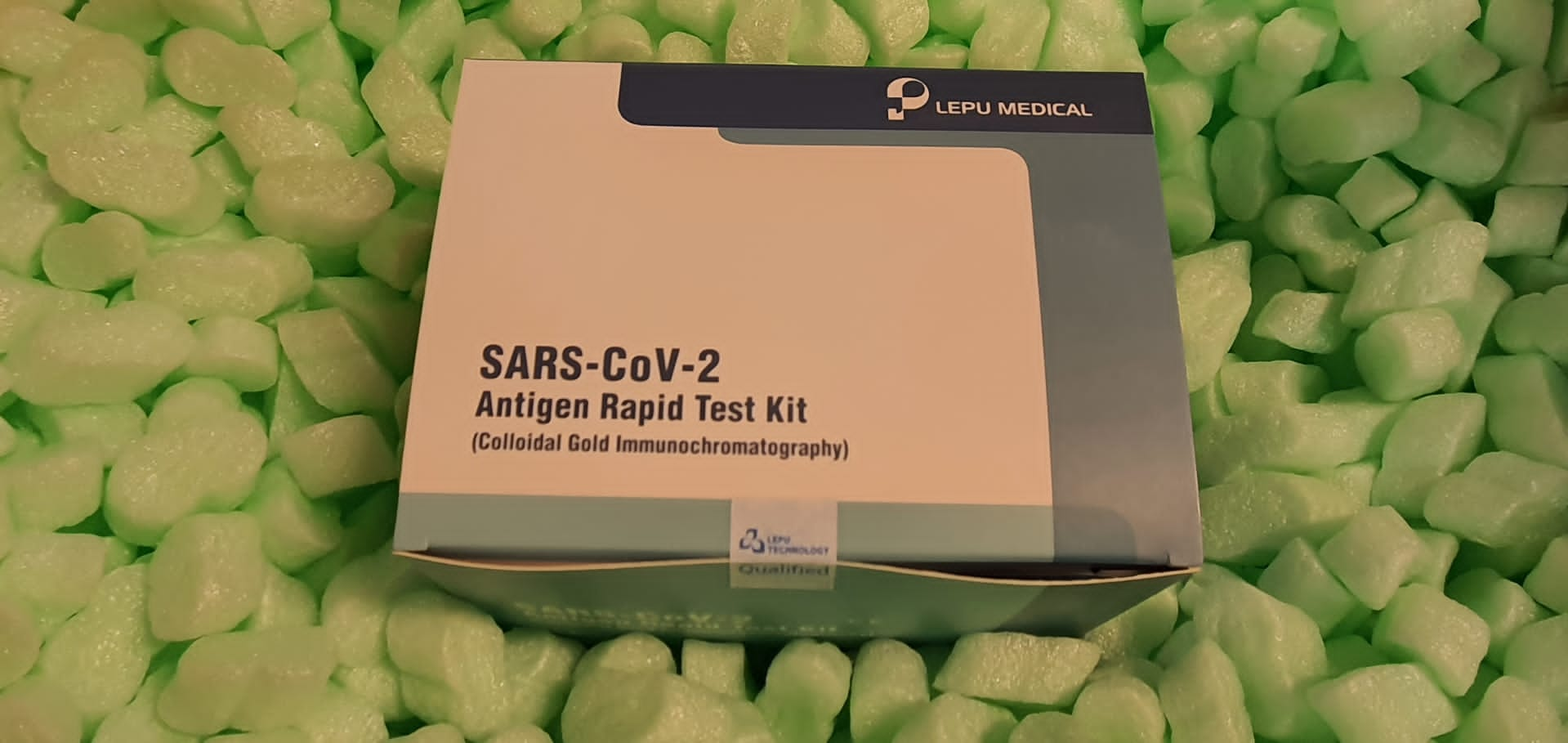With Subsequent Technology Sequencing turning into extra reasonably priced yearly, NGS applied sciences asserted themselves because the quickest and most dependable option to detect Single Nucleotide Variants (SNV) and Copy Quantity Variations (CNV) in most cancers sufferers. These applied sciences can be utilized to sequence DNA at very excessive depths thus permitting to detect abnormalities in tumor cells with very low frequencies.
A number of variant callers are publicly out there and are normally environment friendly at calling out variants. Nevertheless, when frequencies start to drop below 1%, the specificity of those instruments suffers tremendously as true variants at very low frequencies might be simply confused with sequencing or PCR artifacts. The latest use of Distinctive Molecular Identifiers (UMI) in NGS experiments has provided a option to precisely separate true variants from artifacts. We current UMI-Gen, a UMI-based learn simulator for focused sequencing paired-end information. UMI-Gen generates reference reads overlaying the focused areas at a person customizable depth. A
UMI-based variant callers are slowly changing raw-read based mostly variant callers as the usual methodology for an correct detection of variants at very low frequencies. Nevertheless, benchmarking achieved within the instruments publication are normally realized on actual organic information by which actual variants will not be recognized, making it tough to evaluate their accuracy. fter that, utilizing quite a lot of management recordsdata, it estimates the background error charge at every place after which modifies the generated reads to imitate actual organic information. Lastly, it would insert actual variants within the reads from a listing offered by the person.
Caldichromatium japonicum gen. nov., sp. nov., a novel thermophilic phototrophic purple sulphur bacterium of the Chromatiaceae remoted from Nakabusa sizzling springs, Japan
A novel thermophilic phototrophic purple sulphur bacterium was remoted from microbial mats (56 °C) at Nakabusa sizzling springs, Nagano prefecture, Japan. Cells had been motile, rod-shaped, stain Gram-negative and saved sulphur globules intracellularly. Bacteriochlorophyll a and carotenoids of the conventional spirilloxanthin collection had been the most important pigments. Dense liquid cultures had been crimson in color. Pressure No.7T was capable of develop photoautotrophically utilizing sulfide, thiosulfate, sulfite and hydrogen (within the presence of sulfide) as electron donors and bicarbonate as the only carbon supply. Optimum development occurred below anaerobic circumstances within the mild at 50 °C (vary, 40-56 °C) and pH 7.2 (vary, pH 7-8). Main fatty acids had been C16 : 0 (46.8 %), C16 : 1 ω7c (19.9 %), C18 : 1 ω7c (21.1 %), C14 : 0 (4.6 %) and C18 : 0 (2.4 %). The polar lipid profile confirmed phosphatidylglycerol and unidentified aminophospholipids to be the most important lipids.
The one quinone detected was ubiquinone-8. 16S rRNA gene sequence comparisons indicated that the novel bacterium is just distantly associated to Thermochromatium tepidum with a nucleotide identification of 90.4 %. The phylogenetic evaluation supported the excessive novelty of pressure No.7T with a long-branching phylogenetic place inside the Chromatiaceae subsequent to Thermochromatium tepidum. The genome comprised a round chromosome of two.99 Mbp (2 989 870 bp), included no plasmids and had a DNA G+C content material of 61.2 mol%. Polyphasic taxonomic analyses of the isolate prompt pressure No.7T is a novel genus inside the Chromatiaceae. The proposed genus identify of the second actually thermophilic purple sulphur bacterium is Caldichromatium gen. nov. with the sort species Caldichromatium japonicum sp. nov. (DSM 110881=JCM 39101).
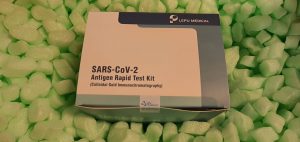
Bioinformatics Strategies in Medical Genetics and Genomics
Medical genomics depends on subsequent–gen sequencing strategies to decipher underlying molecular mechanisms of gene expression. This particular situation collects supplies initially introduced on the “Centenary of Human Inhabitants Genetics” Convention-2019, in Moscow. Right here we current some latest developments in computational strategies examined on precise medical genetics issues dissected by way of genomics, transcriptomics and proteomics information evaluation, gene networks, protein-protein interactions and biomedical literature mining.
We’ve chosen supplies based mostly on programs biology approaches, database mining. These strategies and algorithms had been mentioned on the Digital Medical Discussion board-2019, organized by I.M. Sechenov First Moscow State Medical College presenting bioinformatics approaches for the drug targets discovery in most cancers, its computational assist, and digitalization of medical analysis, in addition to at “Programs Biology and Bioinformatics”-2019 (SBB-2019) Younger Scientists College in Novosibirsk, Russia. Chosen latest developments mentioned at these occasions within the medical genomics and genetics areas are based mostly on novel bioinformatics instruments.
 TBE-Buffer 5X for DNA Sequencing |
|
40121072-1 |
Glycomatrix |
100 mL |
EUR 26.54 |
 TBE-Buffer 5X for DNA Sequencing |
|
40121072-2 |
Glycomatrix |
500 mL |
EUR 44.84 |
 TBE-Buffer 5X for DNA Sequencing |
|
40121072-3 |
Glycomatrix |
1 L |
EUR 72.29 |
 TBE-Buffer 5X for DNA Sequencing |
|
40121072-4 |
Glycomatrix |
4 L |
EUR 192.14 |
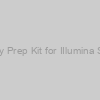 DNA Library Prep Kit for IIlumina Sequencing |
|
K1475-12 |
Biovision |
12 Rxns |
EUR 576 |
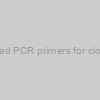 Genorise® Customized PCR primers for cloning and sequencing |
|
GR108023 |
Genorise Scientific |
2 nmol |
EUR 65 |
 Trypin for Mass & Sequencing |
|
T9600-025 |
GenDepot |
25ug |
EUR 174 |
 Trypin for Mass & Sequencing |
|
T9600-100 |
GenDepot |
100ug |
EUR 262.8 |
 Trypin for Mass & Sequencing |
|
T9600-112 |
GenDepot |
12x100ug |
EUR 1988.4 |
 Trypin for Mass & Sequencing |
|
T9600-400 |
GenDepot |
4x100ug |
EUR 781.2 |
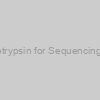 Chymotrypsin for Sequencing grade |
|
C4001-010 |
GenDepot |
4x25ug |
EUR 375.6 |
 Chymotrypsin for Sequencing grade |
|
C4001-100 |
GenDepot |
100ug |
EUR 343.2 |
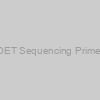 pOET Sequencing Primers |
|
GWB-200100 |
GenWay Biotech |
2 x 100 ul |
Ask for price |
 PCR DNA CLEAN-UP KIT |
|
IB47035 |
IBI Scientific |
2 X 96 WELL FORMAT KIT |
EUR 305.5 |
 PCR DNA CLEAN-UP KIT |
|
IB47040 |
IBI Scientific |
4 X 96 WELL FORMAT KIT |
EUR 608.35 |
 PCR DNA CLEAN-UP KIT |
|
IB47050 |
IBI Scientific |
10 X 96 WELL FORMAT KIT |
EUR 1425.45 |
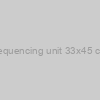 sequencing unit 33x45 cm |
|
ESEQ1100-SYS |
Consort |
ea |
EUR 1842 |
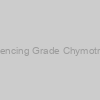 Sequencing Grade Chymotrypsin |
|
RE013 |
SAB |
100ug |
EUR 309 |
|
|
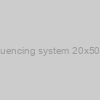 sequencing system 20x50 cm |
|
ESEQ1200-SYS |
Consort |
ea |
EUR 1842 |
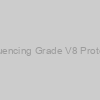 Sequencing Grade V8 Protease |
|
RE014 |
SAB |
50ug |
EUR 209 |
|
|
 SEPTA MAT, FOR 96 WELL PCR PLATES, SILICONE, GREY, NONSTERILE, FOR ABI MULTI-CAPILLARY SEQUENCING INSTRUMENTS, BULK |
|
AM-96-SEPTA-3100 |
CORNING |
10/pk |
EUR 639.6 |
|
Description: Sealing Products; Sealing mats - Axygen |
 Sequencing Grade Modified Trypsin |
|
RE012 |
SAB |
100ug |
EUR 229 |
|
|
 Sequencing Grade Carboxypeptidase B |
|
RE011 |
SAB |
100ug |
EUR 99 |
|
|
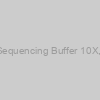 ACES Sequencing Buffer 10X, pH 7.7 |
|
21420000-1 |
Glycomatrix |
1 L |
EUR 138.62 |
 ACES Sequencing Buffer 10X, pH 7.7 |
|
21420000-2 |
Glycomatrix |
4 L |
EUR 456.17 |
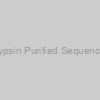 Bovine Trypsin Purified Sequencing Grade |
|
IBOTRYSEQ100UG |
Innovative research |
each |
EUR 148 |
|
|
|
Description: Bovine Trypsin Purified Sequencing Grade |
 Bovine Trypsin Purified Sequencing Grade |
|
IBOTRYSEQ1MG |
Innovative research |
each |
EUR 765 |
|
|
|
Description: Bovine Trypsin Purified Sequencing Grade |
 Bovine Trypsin Purified Sequencing Grade |
|
IBOTRYSEQ400UG |
Innovative research |
each |
EUR 419 |
|
|
|
Description: Bovine Trypsin Purified Sequencing Grade |
) EpiNext Bisulfite Sequencing Kit (Illumina) |
|
P-1056 |
EpiGentek |
-
Ask for price
-
Ask for price
-
Ask for price
|
- 24 Reactions
- 12 Reactions
- 24 Reactions
|
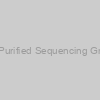 Bovine Trypsin Purified Sequencing Grade Lyophilized |
|
IBOTRYSEQLY100UG |
Innovative research |
each |
EUR 130 |
|
|
|
Description: Bovine Trypsin Purified Sequencing Grade Lyophilized |
 Bovine Trypsin Purified Sequencing Grade Lyophilized |
|
IBOTRYSEQLY1MG |
Innovative research |
each |
EUR 640 |
|
|
|
Description: Bovine Trypsin Purified Sequencing Grade Lyophilized |
 Bovine Trypsin Purified Sequencing Grade Lyophilized |
|
IBOTRYSEQLY400UG |
Innovative research |
each |
EUR 344 |
|
|
|
Description: Bovine Trypsin Purified Sequencing Grade Lyophilized |
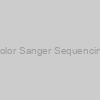 MagaDye™ 4 Color Sanger Sequencing Terminator Kit |
|
17068 |
AAT Bioquest |
5 nmoles |
EUR 2091 |
 PCR Clean-up Kit, |
|
PC05 |
GeneOn |
5 preps |
Ask for price |
 PCR Clean-up Kit, |
|
PC100 |
GeneOn |
100 preps |
EUR 156 |
 PCR Clean-up Kit, |
|
PC200 |
GeneOn |
200 preps |
EUR 226.8 |
 PCR Clean-up Kit, |
|
PC50 |
GeneOn |
50 preps |
EUR 112.8 |
 TuMinute PCR Clean-Up Kit |
|
P-1005 |
EpiGentek |
-
Ask for price
-
Ask for price
-
Ask for price
|
- 100 Samples
- 50 Samples
- 100 Samples
|
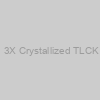 Bovine Alpha Chymotrypsin 3X Crystallized TLCK Treated Sequencing Grade |
|
IBOCHYTLCKSG100UG |
Innovative research |
each |
EUR 297 |
|
|
|
Description: Bovine Alpha Chymotrypsin 3X Crystallized TLCK Treated Sequencing Grade |
 Sequencing Grade Purified) Bacteria-Derived Clostripain (Endoproteinase-Arg-C) Sequencing Grade Purified |
|
IBCTCLOSGPF10UG |
Innovative research |
each |
EUR 165 |
|
|
|
Description: Bacteria-Derived Clostripain (Endoproteinase-Arg-C) Sequencing Grade Purified |
 Sequencing Grade Lyophilized) Bacteria-Derived V8 Protease (Endoprotease Glu-C) Sequencing Grade Lyophilized |
|
IBCTV8SEQLY250UG |
Innovative research |
each |
EUR 784 |
|
|
|
Description: Bacteria-Derived V8 Protease (Endoprotease Glu-C) Sequencing Grade Lyophilized |
 Sequencing Grade Lyophilized) Bacteria-Derived V8 Protease (Endoprotease Glu-C) Sequencing Grade Lyophilized |
|
IBCTV8SEQLY50UG |
Innovative research |
each |
EUR 304 |
|
|
|
Description: Bacteria-Derived V8 Protease (Endoprotease Glu-C) Sequencing Grade Lyophilized |
) PCR Clean-Up Mini Kit (50prep) |
|
FAPCK-001 |
Favorgen |
50 preps |
EUR 144 |
) PCR Clean-Up Mini Kit (200prep) |
|
FAPCK-001-1 |
Favorgen |
200 preps |
EUR 202.8 |
) PCR Clean-Up Mini Kit (300prep) |
|
FAPCK-001-2 |
Favorgen |
300 preps |
EUR 226.8 |
) PCR Clean-Up Mini Kit (50prep) |
|
FAPCK_001 |
Favorgen |
1 kit |
EUR 16 |
) PCR Clean-Up Mini Kit (200prep) |
|
FAPCK_001-1 |
Favorgen |
1 kit |
EUR 54 |
) PCR Clean-Up Mini Kit (300prep) |
|
FAPCK_001-2 |
Favorgen |
1 kit |
EUR 69.5 |
 PCR Clean-Up & Gel Extraction Kit |
|
PDC01-0100 |
Bio-Helix |
100 rxns |
EUR 55 |
) MicroElute PCR Clean Up Kit (50prep) |
|
FAMPK-001 |
Favorgen |
50 preps |
EUR 151.2 |
) MicroElute PCR Clean Up Kit (200prep) |
|
FAMPK-001-1 |
Favorgen |
200 preps |
EUR 224.4 |
 (blister packing for columns)) MicroElute PCR Clean Up Kit (100prep) (blister packing for columns) |
|
FAMPK_001-1B |
Favorgen |
1 kit |
EUR 56 |
 (blister packing for columns)) MicroElute PCR Clean Up Kit (50prep) (blister packing for columns) |
|
FAMPK_001B |
Favorgen |
1 kit |
EUR 28 |
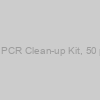 GF-1 PCR Clean-up Kit, 50 preps |
|
GF-PC-050 |
Vivantis |
each |
Ask for price |
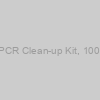 GF-1 PCR Clean-up Kit, 100 preps |
|
GF-PC-100 |
Vivantis |
each |
Ask for price |
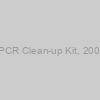 GF-1 PCR Clean-up Kit, 200 preps |
|
GF-PC-200 |
Vivantis |
each |
Ask for price |
) 96-well PCR Clean-Up Kit (1 prep) |
|
FACKE-96001 |
Favorgen |
1 prep |
EUR 189.6 |
) 96-well PCR Clean-Up Kit (2 prep) |
|
FACKE-96002 |
Favorgen |
2 preps |
EUR 255.6 |
) 96-well PCR Clean-Up Kit (4 prep) |
|
FACKE-96004 |
Favorgen |
4 preps |
EUR 380.4 |
) 96-well PCR Clean-Up Kit (1 prep) |
|
FACKE_96001 |
Favorgen |
1 kit |
EUR 45 |
) 96-well PCR Clean-Up Kit (2 prep) |
|
FACKE_96002 |
Favorgen |
1 kit |
EUR 87.5 |
) 96-well PCR Clean-Up Kit (4 prep) |
|
FACKE_96004 |
Favorgen |
1 kit |
EUR 168 |
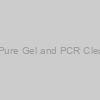 Column-Pure Gel and PCR Clean-Up Kit |
|
D516 |
ABM |
100 Preparations |
EUR 165 |
) FavorPrep Genomic DNA Clean-Up Kit (50prep) |
|
FAGDC-001 |
Favorgen |
50 preps |
EUR 154.8 |
) FavorPrep Genomic DNA Clean-Up Kit (200prep) |
|
FAGDC-001-1 |
Favorgen |
200 preps |
EUR 244.8 |
) FavorPrep Genomic DNA Clean-Up Kit (50prep) |
|
FAGDC_001 |
Favorgen |
1 kit |
EUR 22.5 |
) FavorPrep Genomic DNA Clean-Up Kit (200prep) |
|
FAGDC_001-1 |
Favorgen |
1 kit |
EUR 81 |
 AXYPREP MAG PCR CLEAN UP KIT- 5 ML - 110 PREPS |
|
MAG-PCR-CL-5 |
CORNING |
1/pk |
EUR 175.2 |
|
Description: Bioscience Mag Beads; Magnetic PCR Clean Up |
 AXYPREP MAG PCR CLEAN UP KIT- 50 ML - 1110 PREPS |
|
MAG-PCR-CL-50 |
CORNING |
1/pk |
EUR 694.8 |
|
Description: Bioscience Mag Beads; Magnetic PCR Clean Up |
) AXYPREP MAG PCR CLEAN UP KIT- 1 ML - (SAMPLE SIZE) |
|
MAG-PCR-CL-1 |
CORNING |
1/pk |
EUR 69.6 |
|
Description: Bioscience Mag Beads; Magnetic PCR Clean Up |
) 96-well GE/PCR Clean Up Purification Kit (1 plates) |
|
FAPKE-96001 |
Favorgen |
1 prep |
EUR 175.2 |
) 96-well GE/PCR Clean Up Purification Kit (2 plates) |
|
FAPKE-96002 |
Favorgen |
2 preps |
EUR 225.6 |
) 96-well GE/PCR Clean Up Purification Kit (4 plates) |
|
FAPKE-96004 |
Favorgen |
4 preps |
EUR 328.8 |
) 96-well GE/PCR Clean Up Purification Kit (1 plates) |
|
FAPKE_96001 |
Favorgen |
1 kit |
EUR 36 |
) 96-well GE/PCR Clean Up Purification Kit (2 plates) |
|
FAPKE_96002 |
Favorgen |
1 kit |
EUR 68.5 |
) 96-well GE/PCR Clean Up Purification Kit (4 plates) |
|
FAPKE_96004 |
Favorgen |
1 kit |
EUR 134.5 |
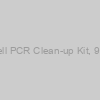 GF-1 96-well PCR Clean-up Kit, 96 x 5 plates |
|
GF-96-C05 |
Vivantis |
each |
Ask for price |
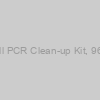 GF-1 96-well PCR Clean-up Kit, 96 x 10 plates |
|
GF-96-C10 |
Vivantis |
each |
Ask for price |
 VAHTS DNA Clean Beads |
|
N411-01 |
Vazyme |
5 ml |
EUR 72.5 |
 VAHTS DNA Clean Beads |
|
N411-02 |
Vazyme |
60 ml |
EUR 475 |
 VAHTS DNA Clean Beads |
|
N411-03 |
Vazyme |
450 ml |
EUR 1892.5 |
 Zenoquick DNA Clean & Concentrator-5 |
|
Z2001-050 |
GenDepot |
50 prpe |
EUR 216 |
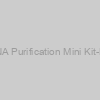 Genorise® Gel DNA Purification Mini Kit-PCR Clean Kit- 50 |
|
GR101080 |
Genorise Scientific |
50 |
EUR 148 |
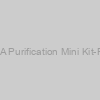 Genorise® Gel DNA Purification Mini Kit-PCR Clean Kit- 100 |
|
GR101080-100 |
Genorise Scientific |
100 |
EUR 267 |
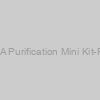 Genorise® Gel DNA Purification Mini Kit-PCR Clean Kit- 200 |
|
GR101081 |
Genorise Scientific |
200 |
EUR 477 |
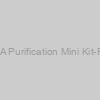 Genorise® Gel DNA Purification Mini Kit-PCR Clean Kit- 500 |
|
GR101081-500 |
Genorise Scientific |
500 |
EUR 1074 |
 EpiQuik DNA Clean and Concentrator Kit |
|
P-1068 |
EpiGentek |
50 Preparations |
EUR 158 |
 VAHTS RNA Clean Beads |
|
N412-01 |
Vazyme |
5 ml |
EUR 87.5 |
 VAHTS RNA Clean Beads |
|
N412-02 |
Vazyme |
40 ml |
EUR 340 |
Lymphoma (lymphosarcoma) is the second most frequent most cancers in canines and is clinically corresponding to human non-Hodgkin lymphoma. Elements affecting canine lymphoma development are unknown and complicated, however there may be proof that genetic mutations play an essential position. We employed Subsequent Gen DNA sequencing of six canines with multicentric B-cell lymphoma present process CHOP chemotherapy to determine genetic variations doubtlessly impacting response. Paired samples from non-neoplastic tissue (blood mononuclear cells) and lymphoma had been collected on the time of analysis. Instances with development free survival above the median of 231 days had been grouped as ‘good’ responders and instances beneath the median had been categorized as ‘poor’ responders.


